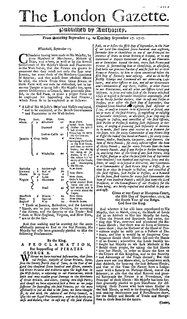Related Research Articles

The Golden Age of Piracy is a common designation for the period between the 1650s and the 1730s, when maritime piracy was a significant factor in the histories of the Caribbean, the United Kingdom, the Indian Ocean, North America, and West Africa.

Thomas Anstis was an early 18th-century pirate, who served under Captain Howell Davis and Captain Bartholomew Roberts, before setting up on his own account, raiding shipping on the eastern coast of the American colonies and in the Caribbean during what is often referred to as the "Golden Age of Piracy".
Jeremiah Cocklyn, better known by the name Thomas Cocklyn, was an English pirate known primarily for his association with Howell Davis, Olivier Levasseur, Richard Taylor, and William Moody.

John Evans was a Welsh pirate who had a short but successful career in the Caribbean.
John Fenn was an early 18th-century English pirate who sailed with Captain Bartholomew Roberts and later had a brief partnership with Thomas Anstis.
Captain John Coxon, sometimes referred to as John Coxen, was a late-seventeenth-century buccaneer who terrorized the Spanish Main. Coxon was one of the most famous of the Brethren of the Coast, a loose consortium of pirates and privateers. Coxon lived during the Buccaneering Age of Piracy.

John Martel was a French pirate active in the Caribbean.

The Republic of Pirates was the base or stronghold of a loose confederacy run by privateers-turned-pirates in Nassau on New Providence island in the Bahamas for about eleven years from 1706 until 1718. While it was not a republic in a formal sense, it was governed by an informal pirate code, which dictated that the crews of the Republic would vote on the leadership of their ships and treat other pirate crews with civility.
Christopher Winter was an English pirate active in the Caribbean. He is best known for sailing in Spanish service and launching the career of Edward England.

The Flying Gang was an 18th-century group of pirates who established themselves in Nassau, New Providence in The Bahamas after the destruction of Port Royal in Jamaica. The gang consisted of the most notorious and cunning pirates of the time, buccaneers who terrorized and pillaged the Caribbean until the Royal Navy and infighting brought them to justice. They achieved great fame and wealth by raiding salvagers attempting to recover gold from the sunken Spanish treasure fleet. They established their own codes and governed themselves independent from any of the colonial powers of the time. Nassau was deemed the Republic of Pirates as it attracted many former privateers looking for work to its shores. The Governor of Bermuda stated that there were over 1000 pirates in Nassau at that time and that they outnumbered the mere hundred inhabitants in the town.
Brigstock Weaver was an English pirate active in the Caribbean. He is best known for his association with fellow pirates Thomas Anstis and Bartholomew Roberts.
William Read was a pirate active in the Indian Ocean near Madagascar. He is best known for rescuing fellow pirate captains John Bowen and Thomas White.
Richard Noland was an Irish pirate active in the Caribbean. He was best known for sailing with Samuel Bellamy before working for the Spanish.
John Cole was a pirate active off the American eastern seaboard. His brief career is associated with Richard Worley and William Moody. He is known more for the unusual cargo of his pirate ship than for his piracy.
Lewis Ferdinando was a pirate active near Bermuda during the Golden Age of Piracy.
Thomas Henley was a pirate and privateer active in the Red Sea and the Caribbean.
Thomas Woolerly was a pirate and privateer active in the Caribbean and the Indian Ocean.
Don Benito was a Spanish pirate and guarda costa privateer active in the Caribbean.
James Browne was a Scottish pirate and privateer active in the Caribbean. He is best known for his hasty execution and its effect on colonial Jamaican government.

Acts of grace, in the context of piracy, were state proclamations offering pardons for acts of piracy. General pardons for piracy were offered on numerous occasions and by multiple states, for instance by the Kingdom of England and its successor, the Kingdom of Great Britain, in the 17th and 18th centuries.
References
- 1 2 3 4 Gosse, Philip (1924). The Pirates' Who's Who by Philip Gosse. New York: Burt Franklin. p. 137. Retrieved 23 June 2017.
- ↑ "Pirate Ships". brethrencoast.com. Retrieved 23 June 2017.
- ↑ The Weekly entertainer; or agreeable and instructive repository. [Continued as] The Weekly entertainer; and west of England miscellany. Sherborne: R. Goadby and Co. 1784. p. 617 . Retrieved 23 June 2017.
- ↑ The European Magazine: And London Review. London: Philological Society of London. 1792. p. 248. Retrieved 23 June 2017.
